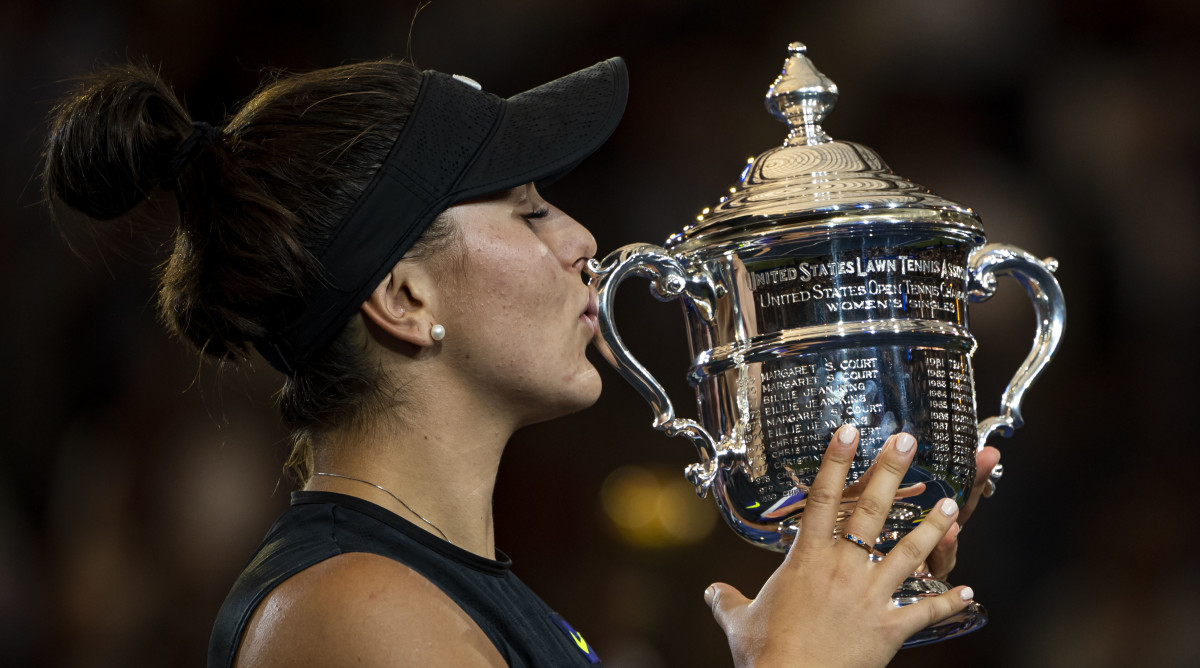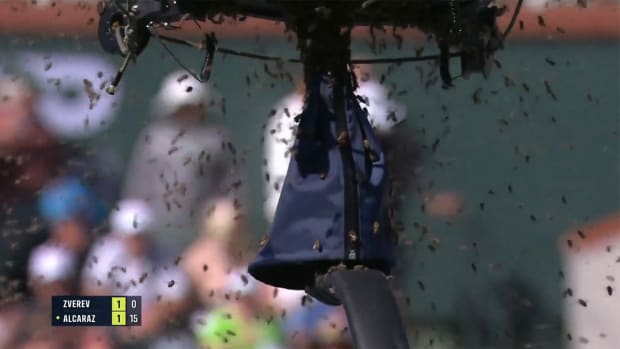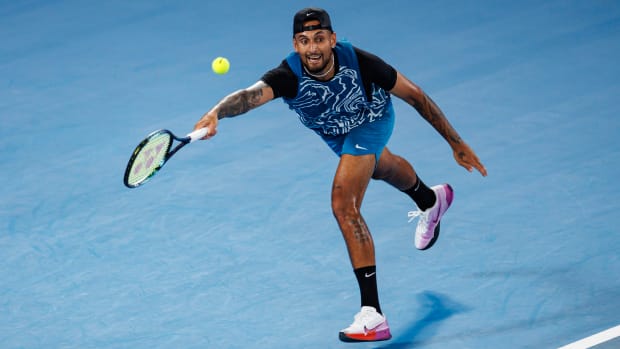After Beating Serena Williams to Win the U.S. Open, Bianca Andreescu’s Time Is Now

NEW YORK — In 1999, a few days before Serena Williams won her first U.S. Open and 10 months before Bianca Andreescu was born, Czech veteran and former Wimbledon champion Jana Novotna announced she was retiring. "The new generation is here, and it is ready to take over," she said at a press conference. "I think those players will be great."
Twenty years and 23 Grand Slam titles later, Williams hasn’t been quite as accommodating to younger generations. Here’s the thing, though: They aren’t waiting around.
In Saturday’s U.S. Open final, 19-year-old Andreescu beat Williams 6–3, 7–5 to win her first Grand Slam, overcoming a rabidly pro-Serena crowd and denying her opponent a record-tying 24th major title.
“I know you guys wanted Serena to win,” Andreescu told the crowd during the trophy ceremony, “so I’m so sorry.”
It was the second straight year Williams’s U.S. Open final opponent felt compelled to apologize for winning, though under very different circumstances. But just like Naomi Osaka, the 2018 champion, Andreescu wasn’t cowed by the moment, the crowd or, crucially, her opponent. Quite the opposite, actually—the Canadian teen exhibited the same extraordinary composure that has defined her breakout season and this fortnight in Flushing Meadows. She managed to fight off a furious comeback from Williams and any self-doubt that could result from blowing two match points. In doing so, she became the first Canadian player, male or female, to win a Grand Slam singles title.
Williams clearly didn’t play her best tennis, particularly on her usually lethal serve. She made only 44% of her first-serve attempts and double-faulted eight times, including in key moments throughout the match. But Andreescu, playing in her first U.S. Open main draw—she failed to get out of qualifying last year—played exceptional tennis, winning her first major with the same blend of powerful strokes and remarkable poise she’s shown all tournament.
Williams looked unsettled from the start. In the opening game of the match, on her serve, she failed to convert two game points and then double-faulted consecutively to give Andreescu an early break. That early misstep proved a harbinger: Williams ended up losing more service games (six) than she won (five).
“The game plan right from the start was to make her work for every ball, to get as many returns in the court as possible,” Andreescu said. “I think she was intimidated a little bit by it.”
After saving a break point with a 103-mph ace at 4–3, Andreescu earned another break, sealing the first set on a double fault from Williams. In the second set, Andreescu again broke the six-time U.S. Open champion in the opening frame … and, again, it was a double fault on game point. This time, Williams immediately broke back, but Andreescu broke her again after a deep forehand into the corner forced a miss from Williams. This, too, was a theme—Andreescu was able to dictate play with her forehand, which is already one of the most dangerous shots in the women’s game.
Serving at 5–1 in the second set, Andreescu appeared to have one hand on the trophy. But Williams saved a match point and came roaring back, winning the next four games to level the set at five games apiece and send Arthur Ashe Stadium into pandemonium. At one point, Andreescu put her fingers in her ears, literally trying to block out the noise.
“I could barely hear myself think really—it was really, really loud,” she said. “I just tried to stay as composed as I could. It’s hard to just block everything out, but I think I did a pretty good job at that.”
Andreescu, amazingly, weathered the storm. Her remarkable poise has been an asset all year, but never has she needed it more than the end of that second set. After holding to take a 6–5 lead, she retreated to her chair for a changeover, placed a towel over her face and thought about her plan for the next game: “Put the goddamn ball inside the court."
Early success doesn’t necessarily beget future glory. But one day, if Andreescu’s star continues to rise, we might look back at that moment— figuring out a way to stop the unstoppable: a ferocious Serena comeback—as seminal.
She wouldn't miss another shot. After Williams saved one match point with an ace, Andreescu converted her third championship point by ripping a forehand winner off Williams’s second serve, breaking her vaunted serve for a sixth time. After a warm embrace with her opponent at the net, Andreescu collapsed onto the court.
With the win, Andreescu became the first player to win the U.S. Open in her main draw debut. A year ago, she lost to Olga Danilovic in qualifying. She finished last season ranked No. 178. Now she adds a Grand Slam title to a year that already included huge victories at Indian Wells and the Rogers Cup. She’ll climb to world No. 5, and she surely has the game to continue winning big titles.
“She seems to have that special quality to be able to play her best tennis when she needs to,” said Pam Shriver, the former world No. 3 and ESPN commentator. “This is just her very beginning. But she loves the big moments.”
Williams gave birth to her first child in September 2017, less than nine months after winning the Australian Open. (Some simple math will tell you she was pregnant during that victory). Since then, she’s reached four Grand Slam finals. That’s the good news. The bad news is she’s lost four of them decisively: to Simona Halep at Wimbledon in July; to Angelique Kerber, a year earlier at the All-England Club; to Osaka in last year’s U.S. Open final fiasco and now, playing the best she’s played at a major since that 2017 title, to Andreescu.
Only three women in the Open Era have won a Grand Slam after giving birth: Evonne Goolagong, Kim Clijsters and, ironically, Margaret Court. But all three were in their 20s when they gave birth. Williams was 35.
“Her body transformed to become a mother,” said Patrick Mouratoglou, Williams’s coach. “You don't come back to your previous body, which is the body of a professional top athlete, overnight. It takes time.”
There’s also the pressure—some of it inherent to a Grand Slam final, of course. But Court’s all-time record beckons, and Williams has spoken about her desire to win a title as a mother. There’s also the fact that she hasn’t played as many matches as she once did, leaving her with less big-match experience to draw on in the pressure situations.
“I honestly don’t think Serena showed up,” Williams said of Saturday’s match. “I have to kind of figure out how to get her to show up in Grand Slam finals.”
Her opponents these last 14 months haven’t had the same issue. Andreescu, in particular, carries herself with extraordinary confidence, and Saturday she played fearless tennis from the start, pressuring Williams relentlessly and pumping herself up after big points.
“She's as tough as it gets as a competitor,” her coach, Sylvain Bruneau, said before the match. “She’s not scared—she goes for it. The bigger the occasion, the bigger she hits.”
Williams isn’t going anywhere. She’ll be back in 2020, and she’ll be among the favorites to win her 24th Grand Slam title at the Australian Open in January. But the new generation—led by Andreescu and Osaka—is only getting better, and they’re hungry for more. After Andreescu’s postmatch press conference, the USTA presented her coach, Bruneau, with a small trophy. But as coach and pupil posed for photos, he realized he was holding it the wrong way. The display text hidden. “I’m not used to this,” he said, smiling.
“Well,” Andreescu deadpanned, “get used to it.”





